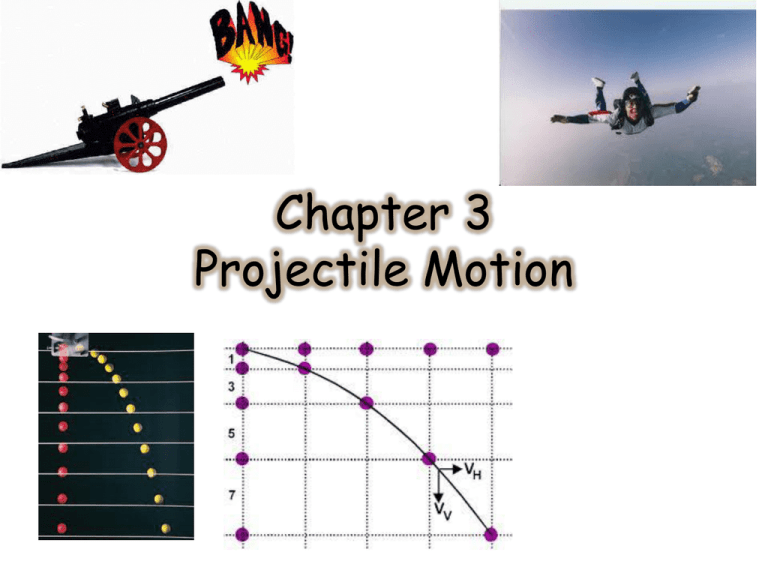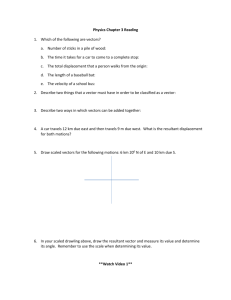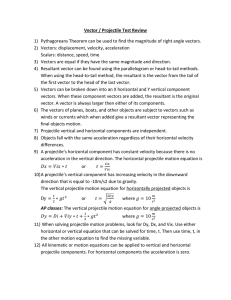Chapter 3 Projectile Motion
advertisement

Chapter 3 Projectile Motion Projectile Motion • Previously, we studied motion in one direction (linear motion) • Projectiles follow a curved path (nonlinear motion) The velocity of a projectile has both vertical and horizontal components to its motion that are independent of each other. Vectors • A scalar quantity has only magnitude Ex. 70 mph • A vector quantity has both magnitude and direction Ex. 70 mph, North In physics an arrow is drawn to represent a vector. The length of the arrow is proportional to the magnitude of the vector and the arrow shows the direction. Components of Vectors 80 km/hr 60 km/hr • “Any vector can be “resolved” into two component vectors at right angles to each other. • “These two vectors are known as components of the given vector they replace.” - p. 31 Vertical Distance Horizontal Distance • Each box represents one time interval (Ex. 1 sec) • Purple dots represent the horizontal position (top), vertical position (left side) and position in space (curved line) of a projectile. • Notice that the horizontal speed of the projectile remains constant • The vertical speed of the projectile acts like an object in free-fall • The only force acting on our projectile is gravity (neglecting air resistance) Vertical Distance Horizontal Distance • The Horizontal Distance vs. time that a projectile will travel will be constant: Distance = Velocity x Time • The vertical Distance vs time that a projectile will fall will follow the equation d=½gt2 (Note this applies only if a projectile is dropped from rest. If there is an initial velocity, we have to use the expanded equation: d= vit + ½gt2) • Suppose a ball is rolled off of a cliff horizontally with a speed of 5 m/s Example 1 • How long will it take the ball to hit the ground? 123 Meters d=½gt2 123 = ½(9.81)(t2) t= 5s • How fast was the ball traveling in the downward direction when it hit the ground? v = gt v = (9.81)(5) = 49 m/s • How fast in the horizontal direction was the ball traveling when it hit the ground? 5 m/s • How far from the cliff will the ball land? Distance = Velocity x Time Distance = (5 m/s)(5s) = 25 meters











